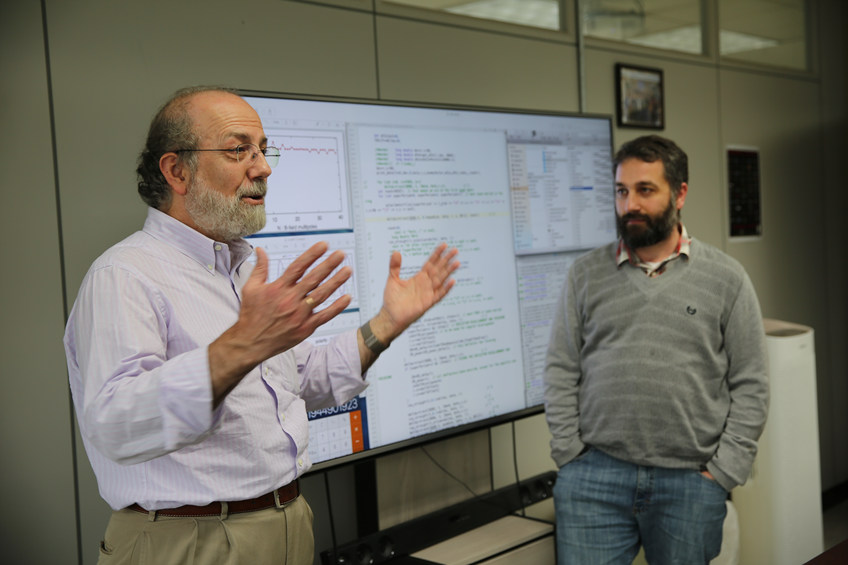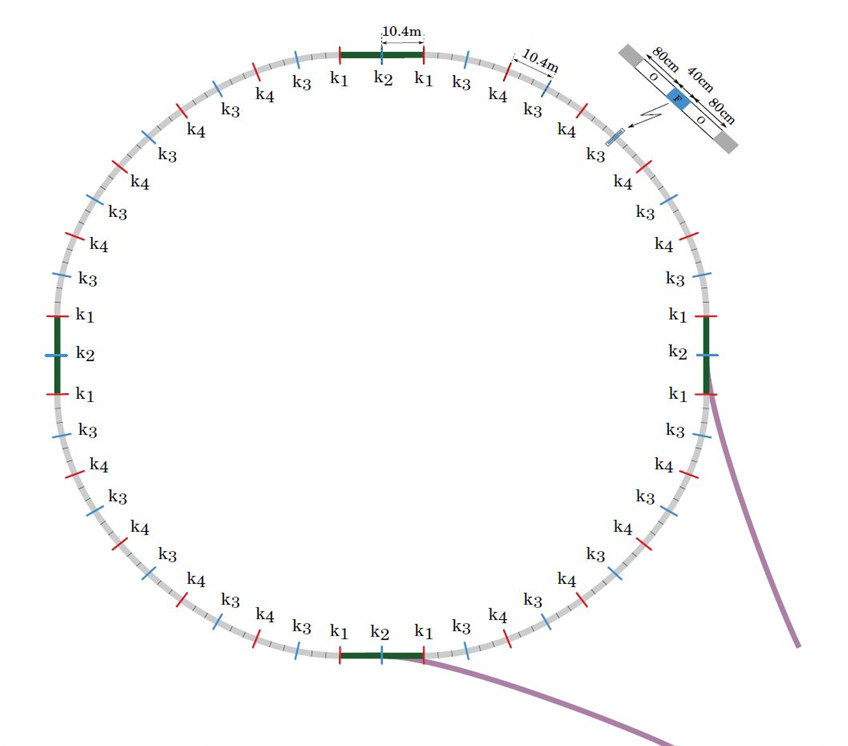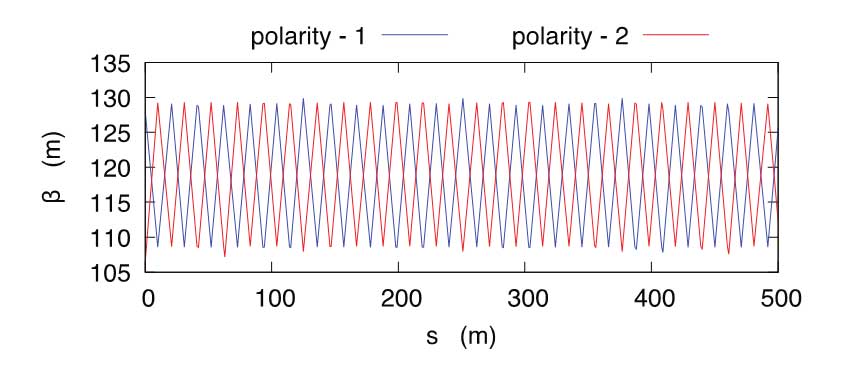주메뉴
- About IBS 연구원소개
-
Research Centers
연구단소개
- Research Outcomes
- Mathematics
- Physics
- Center for Underground Physics
- Center for Theoretical Physics of the Universe (Particle Theory and Cosmology Group)
- Center for Theoretical Physics of the Universe (Cosmology, Gravity and Astroparticle Physics Group)
- Dark Matter Axion Group
- Center for Artificial Low Dimensional Electronic Systems
- Center for Theoretical Physics of Complex Systems
- Center for Quantum Nanoscience
- Center for Exotic Nuclear Studies
- Center for Van der Waals Quantum Solids
- Center for Relativistic Laser Science
- Chemistry
- Life Sciences
- Earth Science
- Interdisciplinary
- Center for Neuroscience Imaging Research (Neuro Technology Group)
- Center for Neuroscience Imaging Research (Cognitive and Computational Neuroscience Group)
- Center for Algorithmic and Robotized Synthesis
- Center for Genome Engineering
- Center for Nanomedicine
- Center for Biomolecular and Cellular Structure
- Center for 2D Quantum Heterostructures
- Center for Quantum Conversion Research
- Institutes
- Korea Virus Research Institute
- News Center 뉴스 센터
- Career 인재초빙
- Living in Korea IBS School-UST
- IBS School 윤리경영


주메뉴
- About IBS
-
Research Centers
- Research Outcomes
- Mathematics
- Physics
- Center for Underground Physics
- Center for Theoretical Physics of the Universe (Particle Theory and Cosmology Group)
- Center for Theoretical Physics of the Universe (Cosmology, Gravity and Astroparticle Physics Group)
- Dark Matter Axion Group
- Center for Artificial Low Dimensional Electronic Systems
- Center for Theoretical Physics of Complex Systems
- Center for Quantum Nanoscience
- Center for Exotic Nuclear Studies
- Center for Van der Waals Quantum Solids
- Center for Relativistic Laser Science
- Chemistry
- Life Sciences
- Earth Science
- Interdisciplinary
- Center for Neuroscience Imaging Research (Neuro Technology Group)
- Center for Neuroscience Imaging Research (Cognitive and Computational Neuroscience Group)
- Center for Algorithmic and Robotized Synthesis
- Center for Genome Engineering
- Center for Nanomedicine
- Center for Biomolecular and Cellular Structure
- Center for 2D Quantum Heterostructures
- Center for Quantum Conversion Research
- Institutes
- Korea Virus Research Institute
- News Center
- Career
- Living in Korea
- IBS School
News Center
Hybrid Ring Narrows the Range to Find the Clue to Early UniverseA high sensitivity particle physics experiment proposed by IBS scientists can unveil mysterious disappearance of the antimatter at the creation of the universe
Imagine a baseball pitcher throwing a slide. As the ball travels horizontally through the air, it also moves down because of the effects of the force of gravity, making a shape of curve outwards. Then what would happen if time reverses? Will the ball curve reverse, i.e. inwards, just as the ball is thrown back? If you tape the motion of throwing and play the video backwards, you will see the ball still curves outwards with gravity unaffected by the time reversal. This is an example of so called "symmetry in physics," the concept that properties of particles such as atoms and molecules remain unchanged after being subjected to a variety of symmetry transformations or "operations" – in this case, time reversal. Symmetry has played a critical role in our understanding of the laws of physics and the nature of the cosmos, such as relativity and quantum mechanics. Though a series of discoveries revealed that symmetry can be broken in the decay of some particles, symmetry still remains as a prevalent characteristic in shaping our ordinary lives, namely the macroscopic world.
Then what about the symmetry in the sub-atomic world? The nuclear world is assumed to be under a strong force whose existence may explain why its components, protons (and neutrons) are held together despite they have the same charges. Though theoretical explanations for such strong nuclear binding suppose that time reversal might lead to broken symmetry, experimental scientists have not been able to detect the clue of the symmetry violation in the microscopic world, e.g. EDM (electric dipole moments). Since it can be shown that the occurrence of symmetry violation after the big bang might explain one of the unsolved theoretical questions in physics – why the universe is made chiefly of matter, there have been a number of EDM experiments over 60 years. Led by professor Yannis K. Semertzidis, researchers at the Center for Axion and Precision Physics within the Institute for Basic Science (IBS) in Daejeon, South Korea designed a hybrid storage ring that will help physicists' endeavor to detect EDM with more than a thousand times better sensitivity compared to the existing technologies. The main challenge in the pursuit of EDM is to filter out the magnetic field as it mimics the EDM signal. Currently, only state-of-the-art magnetic measurement and shielding technologies manage to suppress the magnetic field at sub-nanoTesla level, which is the highest sensitivity conventional technologies can allow. IBS scientists proposed to incorporate magnets into an electric storage ring. Magnetic focusing in the storage ring will work like a navigator that guides particles to the trajectory with zero net force. When particles drifts away from the path they are supposed to follow, due to external magnetic fields, the magnets will force the particles back on the 'right' track. Since the magnets effectively undo any effects from the external magnetic fields as described, this new breakthrough design will enable physicists to forgo layers of shielding that the existing technologies must be equipped to suppress any interfering elements. Dr. Selcuk Haciomeroglu, the first author of the study says, "Adding magnetic focusing elements is the answer to eliminating magnetic fields. The stronger, the better." An electric storage ring is a relatively new technique for EDM experiments. It allows particles to be injected in both clock-wise (CW) and counter-clock-wise (CCW) directions. Since this CW/CCW design enables to compare two trajectories simultaneously, researchers can identify what interferes with beam motion and precisely control the motion of particles. For instance, if there is only a CW beam, some unwanted magnetic field configurations can induce a false-EDM signal. But if a CCW beam is introduced simultaneously, the same field configuration and a similar false-EDM signal, but this time in the opposite direction, will be produced. So, the total false-EDM signal cancels out. Still, this electric storage ring has been limited in that tiny magnetic fields would be present somewhere in the ring. They create the conditions for the perfect and undetected background, i.e. fake EDM signal. This is where the hybrid ring comes in. As shown above, IBS scientists theoretically prove that the magnets reduce any effects from external factors. Simulation studies also showed that magnets varied in their strength, can compensate for any error created by the electric fields in the ring.
In particular, IBS scientists suggest to place several focusing and defocusing magnets at a periodic distance. This arrangement allow them to store both CW and CCW particles as the existing electric ring methods features while retaining advantages from this hybrid ring structure. If EDM exists in the protons, their spins will vertically grow at a certain rate. Then, these particles may show spin growth rates that are asymmetrically turn to the left-handed or right-handed side after being collided into the target in the ring. IBS scientists suggest these patterns may tell the existence of EDM in protons. Notably, even when EDM cannot be found from the hybrid ring experiment, it is still worth to notice that this new breakthrough design narrows the range of the existence of EDM, thus allowing us to get closer to cracking the mystery.
Yannis K. Semertzidis, a corresponding author of the study states, "This hybrid design allows us to conduct an EDM experiment with a thousand times better sensitivity than the current experimental limit. Our pursuit for EDM in the nuclear world has important theoretical consequences. It might give us a clue to understand why the universe is in the imbalance of the matter-antimatter ratio." This study theoretically proves that periodic magnetic focusing of alternating polarity can both store the counter-rotating beams and reduce the EDM-like effect of the radial magnetic field (Figures 1, 2). Making the experiment with varying focusing strength, one can filter out focusing effects of electrical origin. "It offers a more practical way forward towards a realistic storage ring capable of answering whether or not strong interactions strictly conserve all the physics laws going forward and backward in time, " adds Dr. Haciomeroglu. Dahee Carol Kim Notes for editors - References - Media Contact - About the Institute for Basic Science (IBS) |
|||
Center for Axion and Precision Physics ResearchPublication Repository |
| Next | |
|---|---|
| before |
- Content Manager
- Public Relations Team : Yim Ji Yeob 042-878-8173
- Last Update 2023-11-28 14:20
















